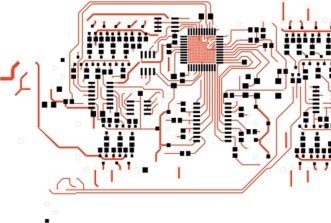This website uses cookies so that we can provide you with the best user experience possible. Cookie information is stored in your browser and performs functions such as recognising you when you return to our website and helping our team to understand which sections of the website you find most interesting and useful.
Intel to Begin 3nm Production in Europe by 2025
Intel is making a significant move by shifting high volume production of 3nm chips to Europe at its Fab34 in Ireland later this year. This decision marks a strategic shift for the company, as it aims to leverage its advanced technology in a new location. Intel 3, the company’s second EUV lithography node, boasts an impressive 18% performance-per-watt improvement over Intel 4. The process has already been offered to foundry customers and was in high-volume manufacturing in Oregon during 2024. Now, with high-volume manufacturing set to be shifted to Leixlip in Ireland for 2025, Intel is signaling its commitment to expanding its production capabilities.
nThe Xeon 6 Scalable server processor offerings are among the key products that will be built on the advanced Intel 3 technology. This move is expected to enhance the performance and efficiency of these server processors, catering to the growing demand for high-performance computing solutions. By incorporating the latest technological advancements into its products, Intel aims to stay competitive in the rapidly evolving semiconductor market.
nOne of the longstanding challenges in the semiconductor supply chain has been the lack of leading-edge process technology in Europe. With the availability of the Intel 3 process as part of Intel Foundry Services, the company is poised to address this gap and strengthen its position in the region. This development could potentially be a game-changer for Intel, offering a key capability that may help the company navigate the complexities of the global semiconductor industry.
nDespite these positive strides, Intel has faced its share of challenges, including tepid results in 2024 from its foundry unit. To support its expansion plans, the company has been seeking investments and recently sold the older half of the fab to equity fund Apollo. This strategic move is aimed at securing the necessary resources to drive growth and innovation in its manufacturing operations.
nLooking ahead, Intel is not only focusing on the Intel 3 process but also offering Intel 4, 18A, 7nm, and 16nm processes to its foundry customers. Additionally, the company is collaborating with UMC on a 12nm foundry process, further expanding its portfolio of offerings. With plans to commence high-volume manufacturing of Panther Lake, a new client family of products, and the first processors on Intel 18A in 2025, Intel is gearing up for a series of significant milestones in the coming years. The company is also actively developing Intel 14A, its third advanced process technology offering to external customers, with performance-per-watt and density scaling improvements expected in 2026.














